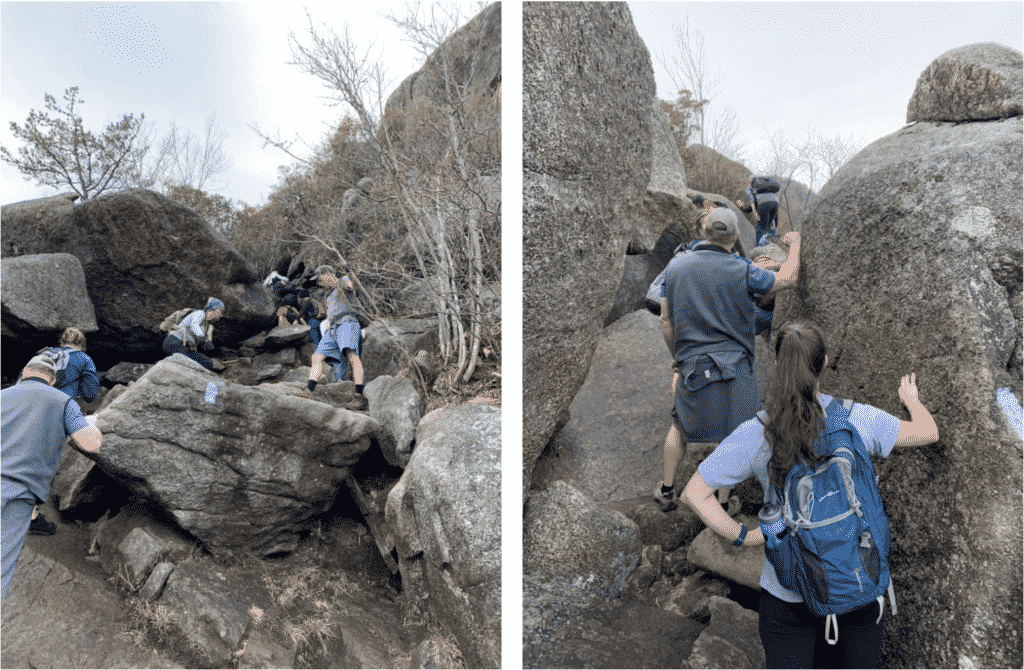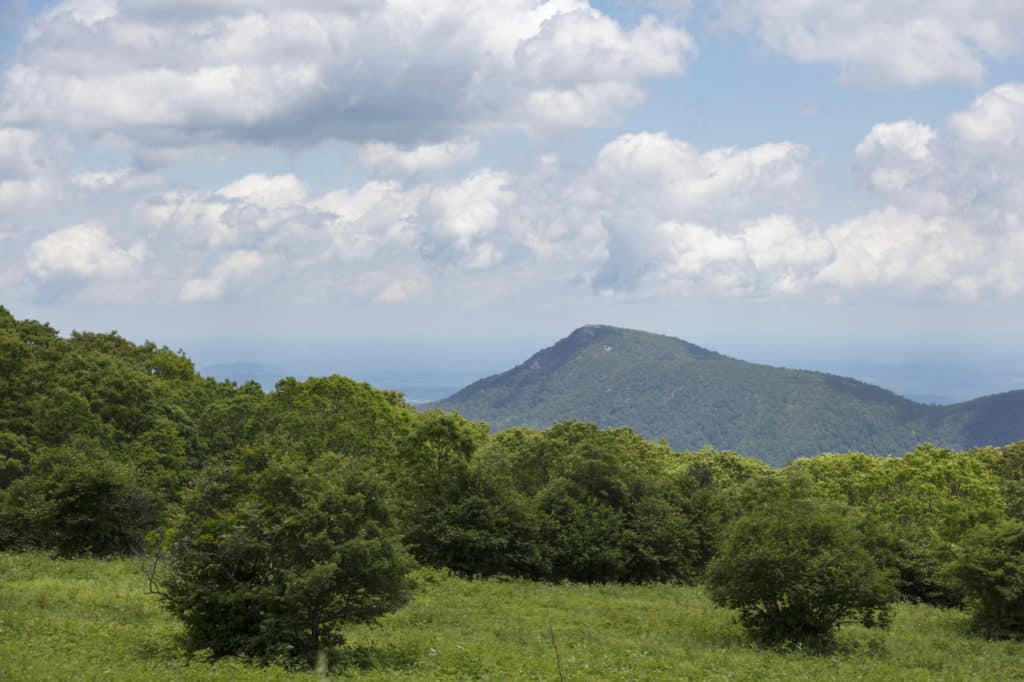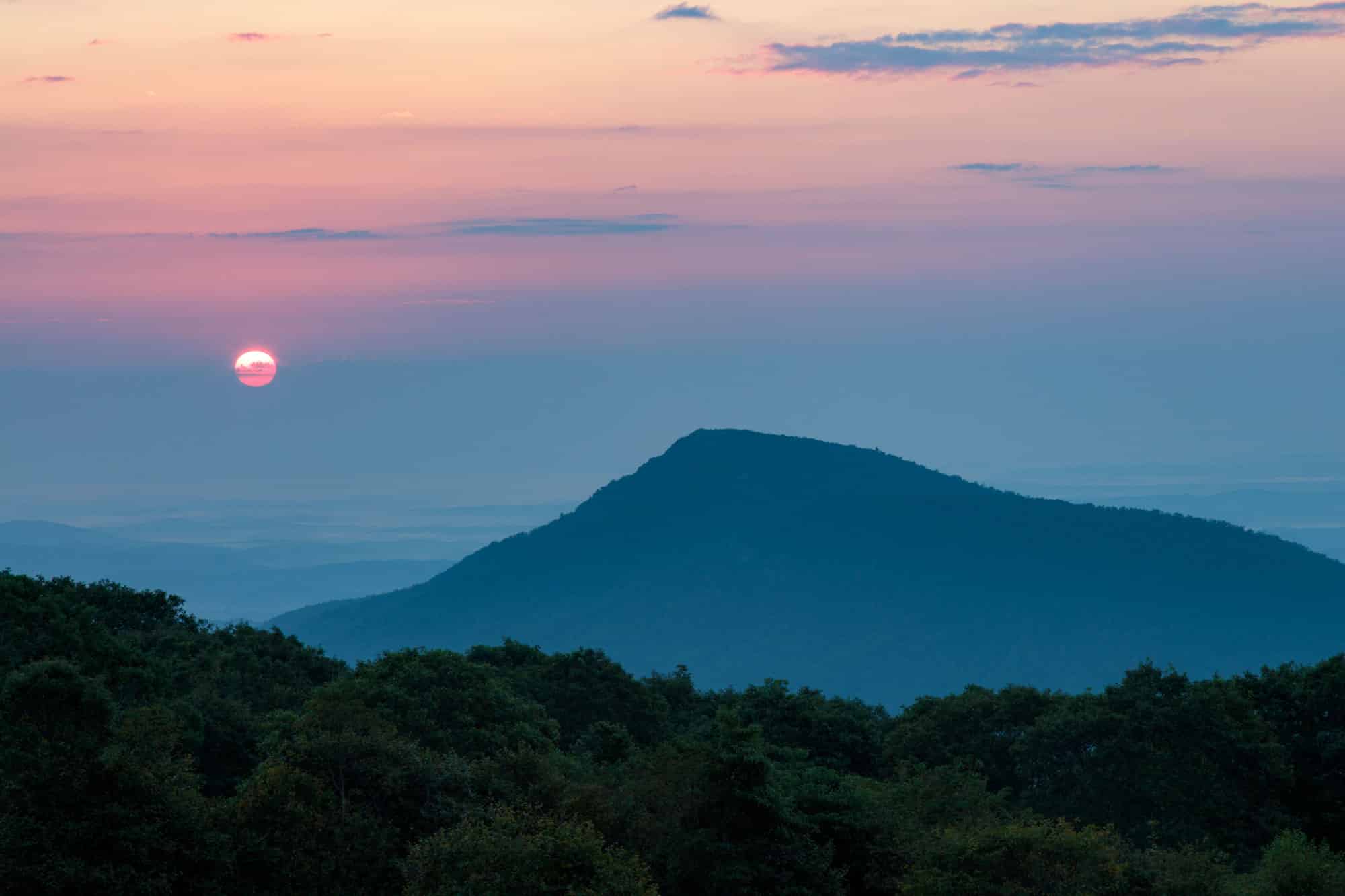Shenandoah National Park Launches Pilot Ticketing Project for Popular Virginia Summit
It’s no secret that people seeking safe open spaces have turned to the outdoors more than ever during the pandemic. As a result, popular hiking areas like Old Rag Mountain in Virginia’s Shenandoah National Park (SNP) have been overrun by big crowds. Earlier this month, park officials implemented a pilot day-use ticketing program in hopes of mitigating the overuse impact caused by recent higher visitation rates.
From March 1 to November 30, 2022, Old Rag Mountain, Saddle, Ridge, and Ridge Access Trails will require visitors to obtain a $1 day-use ticket in advance, in addition to a park entrance pass. Ticket availability is capped at 800 per day during the one-year pilot program.
The intention behind the project is to not only better conserve the land and habitats of rare ecological species found on Old Rag, but also to improve visitor experience and address public safety concerns. Congestion on the popular mountain has been an issue since well before the pandemic. A visitor use study conducted in 2019 revealed that crowding on the trail and in the park’s facilities caused 79 percent of the 12 percent of people who did not make it to the Old Rag summit to turn around.
“It’s sort of being loved to death,” Patrick Kenney, superintendent of SNP said. “We’re not in the business of turning people away from national parks and we’re trying not to do that. We’re just saying that Old Rag is not a place that can sustain unlimited use on a daily basis.”

As the most popular hike in SNP, and one of the most popular on the entire East Coast, Old Rag Mountain offers visitors challenging rock scrambles over nine miles of trails, as well as rewarding 360-degree views at the summit. The route to the 3,284-foot peak features tight chutes and scrambles, which often cause hiker bottlenecks that can last up to an hour.
“Old Rag is a backcountry wilderness type experience, and it should feel that way,” Kenney continued. “To climb that mountain and to be standing and waiting over an hour to get through some squeeze point on the trail is not a high-quality visitor experience.”
An even bigger concern that comes with overcrowding is the safety of visitors who go off the challenging trail to avoid people. Not only does this impact wildlife habitats, it also puts people at higher risk of injury, as it becomes potentially harder for rescuers to reach those who need help.
“The mountain itself is a challenge, it’s not an easy hike,” SNP’s Division Chief for Natural and Cultural Resources James Schaberl said. “Rescues are often in direct relation to the number of people on the mountain when it’s really busy, [because] people get frustrated waiting in line. If we can reduce the congestion and the crowding, we can increase safety too.”
According to park officials, planning ahead can make the visitor experience much more enjoyable. This includes checking location guidelines online, packing proper clothing for the weather, making sure pets are allowed in specific areas, and bringing enough food and water. They also recommend searching for less popular hiking locations within the park’s vast terrain.
“It’s probably more disconcerting that we have people arriving without doing any pre-planning than it is that they’re arriving without a ticket,” Claire Comer, interpretive specialist at SNP, said. “Shenandoah has 500 miles of trails—there are so many awesome trails that people just don’t even think about and head straight for the overcrowded, more popular ones like Old Rag. How about Stanton River Trail or Riprap Wildcat? All I am saying is that it’s still possible to hike in Shenandoah and not see another person or big crowds.”
Park management will evaluate the results at the end of the pilot project, offer opportunities for public input, share its analysis, and adapt to a permanent system in the future. In the meantime, the park is asking the public to help support these efforts not only for the park and the wildlife but for themselves to best stay safe and enjoy their visit to Shenandoah.
“I just think about those 12 percent of people that turned around,” Schaberl said. “That might have been their first experience on Old Rag or at Shenandoah National Park, and they turned around because they were entirely dissatisfied. That’s to me what we need to protect against, there’s a point where too much is too much. That’s when we have to intervene and try to take measures to make it work for the people and for the resources.”

Cover photo courtesy of Shenandoah National Park








